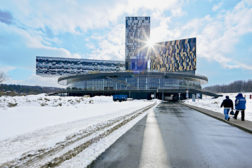Articles by Asad Syrkett
Johnsen Schmaling Architects
An enterprising duo explores materials and context in a series of projects that make big statements on a small scale.
Read More
Copyright ©2024. All Rights Reserved BNP Media.
Design, CMS, Hosting & Web Development :: ePublishing

